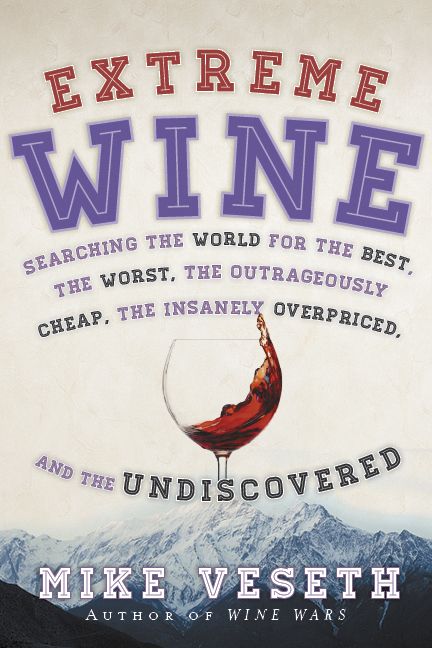Exploring the Edge

By Mark Stock
Extreme wine is built on the idea that what’s going on at the edge of the wine world can tell you a lot about what’s happening all the way through to the center of the glass.”
So goes the self-described manifesto for “Extreme Wine,” Mike Veseth’s latest book. The college professor-turned author has shifted his interest and expertise in economics to wine, with about a dozen published books to his name and a popular wine blog aptly named “The Wine Economist.” And while “Extreme Wine” is chock-full of interesting trivia, the book is more cute and speculative than extremely engaging.
Veseth employs the X Games as his main metaphor, contending that the wine industry as a whole can be better understood by the extreme ends of the industry’s broad spectrum. Subjects like six-figure bottles of wine, equatorial vineyards capable of producing three crops a year, and adventurous wine tours that involve sensory hikes. By themselves, these particular vignettes are quite interesting. However, as a single book, “Extreme Wine” drags at times and is perhaps overly dependent on the adventurous metaphor.
Predictably, Veseth excels in his economic analysis of global wine. His chapters dealing with fame and the celebrity effect on wine stand out. His historical digging is admirable as well, especially in describing the creation of certain major players, like the “gang of four plus one” in France (Haut-Brion, Lafite Rothschild, Latour, Margaux, Mouton-Rothschild).
One of the best chapters details the great booms and busts various winemaking countries have experienced over the generations. It reads like a well-researched essay, without being so dense that it’s intimidating. His ironic findings within Prohibition — the movement actually sparked its own little wine boom thanks to backward legislation and loopholes — provide an enhanced appreciation for American wine’s wobbly formative years.
Veseth tends to offer a lot of outside research and opinion. English wine critic Jancis Robinson features prominently in “Extreme Wine,” from tasting notes to optimism about promising wine regions. Granted, Robinson is a much-quoted, world renowned figure with plenty of tools at her disposal, but Veseth seems to parrot her more than use her work as a prompt for further investigation or reflection. But this is not to say Veseth hasn’t presented some interesting findings in his latest book.
With detailed outlines of industry phenomena like bargain wine, the author has a clear grasp of the economic factors at play in the burgeoning wine game. This is especially the case in his chapter about the industry’s international future, titled “Extreme Wine: The Next Generation.” Here, Veseth renders informative sketches on rising economic powers, from obvious candidates like China and Brazil to less expected nominees such as Turkey and Mexico. Careful social and political considerations are presented for each, making Veseth’s case for, say, selling wine in India, pretty persuasive.
Overall, “Extreme Wine” leaves the reader with interesting factoids about an industry that connects all four corners of the world. The extreme angle makes for some fascinating chapters about memorable game-changers, but I wonder if this project would have fared better as a series of blog entries as opposed to a single narrative.
Mark Stock is a freelance writer. He works at Vista Hills Winery.







